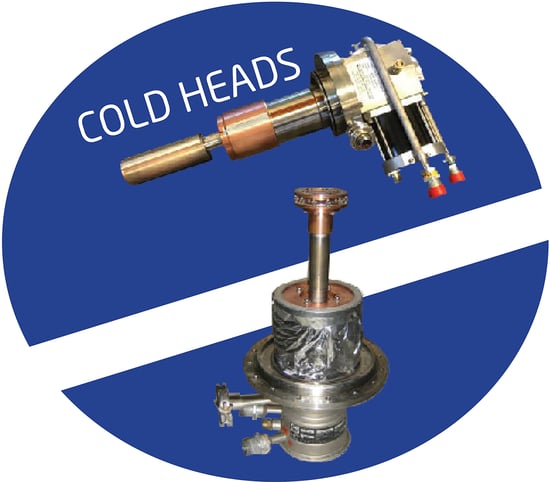If you’re using an MRI, it’s important to understand what an MRI Cold Head does. After all, it’s crucial to monitor an MRI Cold Head for better scanner performance and lower maintenance costs. The experts at Atlantis Worldwide put together this information so you can have a thorough understanding about your MRI Cold Head.
better scanner performance and lower maintenance costs. The experts at Atlantis Worldwide put together this information so you can have a thorough understanding about your MRI Cold Head.
Every MRI has a cooling system that uses thousands of liters of liquid helium to keep the MRI magnet cool. When the helium is exposed to very high temperatures, it turns from liquid to gas. The Cold Head is located inside the cooling system in the midst of all the helium. It actually condenses the helium gas to liquid to prevent it from burning off entirely.
The average lifespan of a new Cold Head is 4-5 years and a refurbished one will last 3-4 years. A Cold Head’s performance is measured by its “re-condensing margin.” Each MRI’s console should provide the metrics for this number. As a rule, Cold Heads lose approximately 10% of its cooling capacity every year. When the margin approaches zero, it’s time to replace the Cold Head. If it’s not replaced, it can lead to a magnet quench, which can put your MRI scanner out of commission and cost a great deal to repair.
MRI Cold Heads: Issues and Solutions
Fluctuating or dropping re-condensing margin: Is your compressor still working and your re-condensing margin is dropping or fluctuating? If so, your cold head is likely the problem and the level of your helium loss could increase. The sooner you address the issue the better. The longer you wait, the more it will cost as helium will begin burning off at an increasing rate. Replace your cold head as soon as you can to reduce risk/cost.
Contamination: If there are impurities in your helium or migration of the oil inside your system’s compressor into your cold head, it can cause damage or reduce the cold head’s efficiency. These contamination issues emerge gradually but can cause serious issues. By replacing your system’s adsorber on an annual basis, you can reduce the likelihood of oil moving from your compressor and contaminating your cold head. An adsorber is the filtration measure that will keep oil out of the cold head and only let helium through. You can also work with qualified MRI field engineers to make sure gaseous contamination doesn’t occur during the installation of a new cold head. In addition, you can contact your service provider for oil testing and air testing. If they find contamination, a problem is likely to happen sooner than later.
Replacement Cost for MRI Cold Head
The cost of replacing an MRI cold is $5,000-$10,000, depending on the type of MRI Scanner you have and whether you purchase a new cold head or refurbished one.
The best way to protect your investment in an MRI Scanner is to be proactive with all maintenance. Monitor your re-condensing margin, get a new adsorber every year and talk to your service provider about contamination testing.
Talk To An Expert
Still have questions about maintain and protecting your MRI Scanner? Or, are you in the market for an MRI Scanner but not sure if a new or refurbished one is the right choice? Talk to the experts at Atlantis Worldwide. We’ve been helping clients with their medical imaging needs for 30 years and would love to help you.
Contact Atlantis Worldwide today.
Some blogs you may have missed:
- The Future of Helium & MRIs
- MRI Cold Head Tips
- Service Contracts for Imaging Systems: Penny Wise and Pound Foolish?
- Radiologists, Healthcare & Social Media
- Should your business lease or buy medical imaging equipment?
- Free MRI Resources
Meet the author: Vikki Harmonay



